English Porter Whiskey Wall Art & Canvas Prints
English Porter Whiskey Wall Art & Canvas Prints
Couldn't load pickup availability
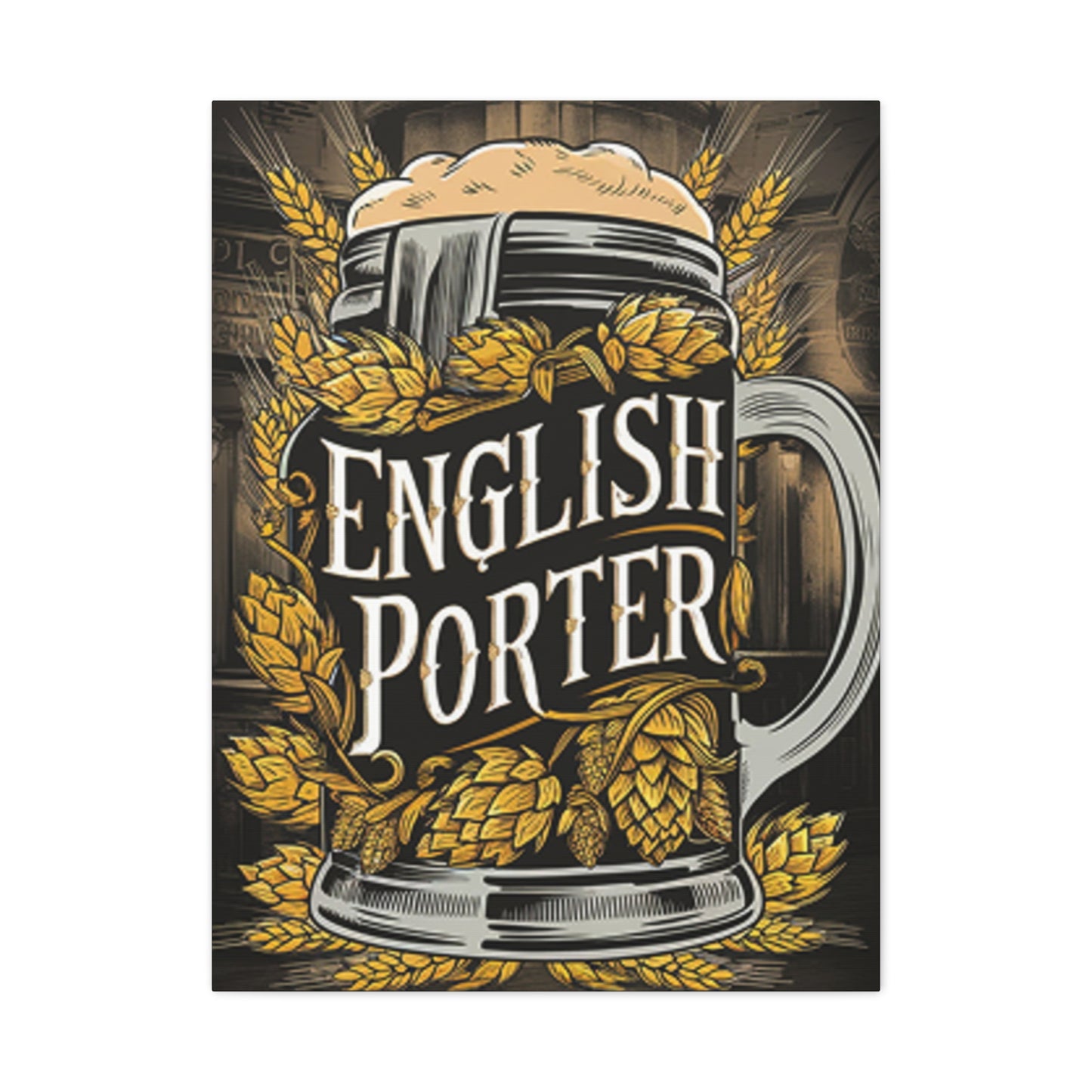
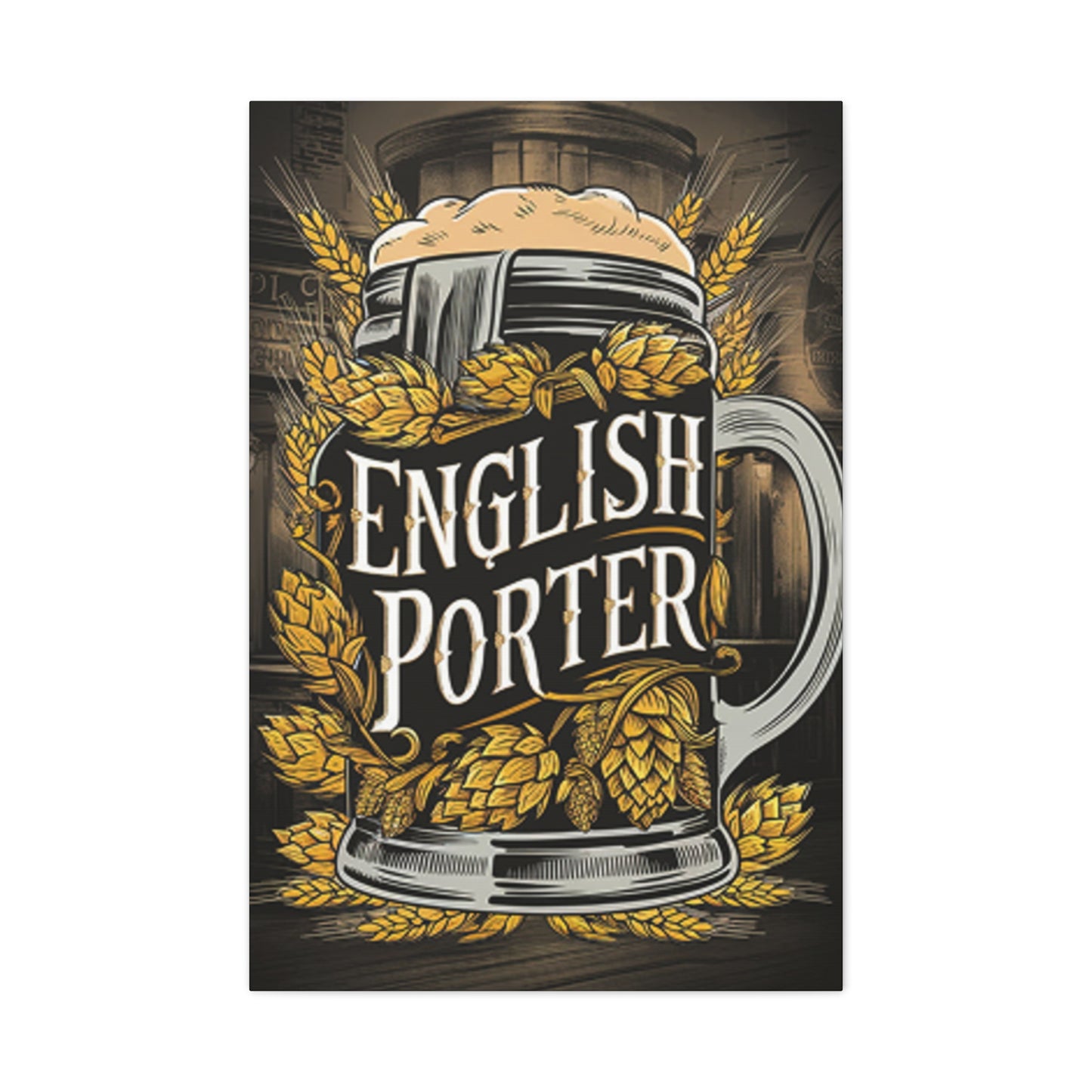
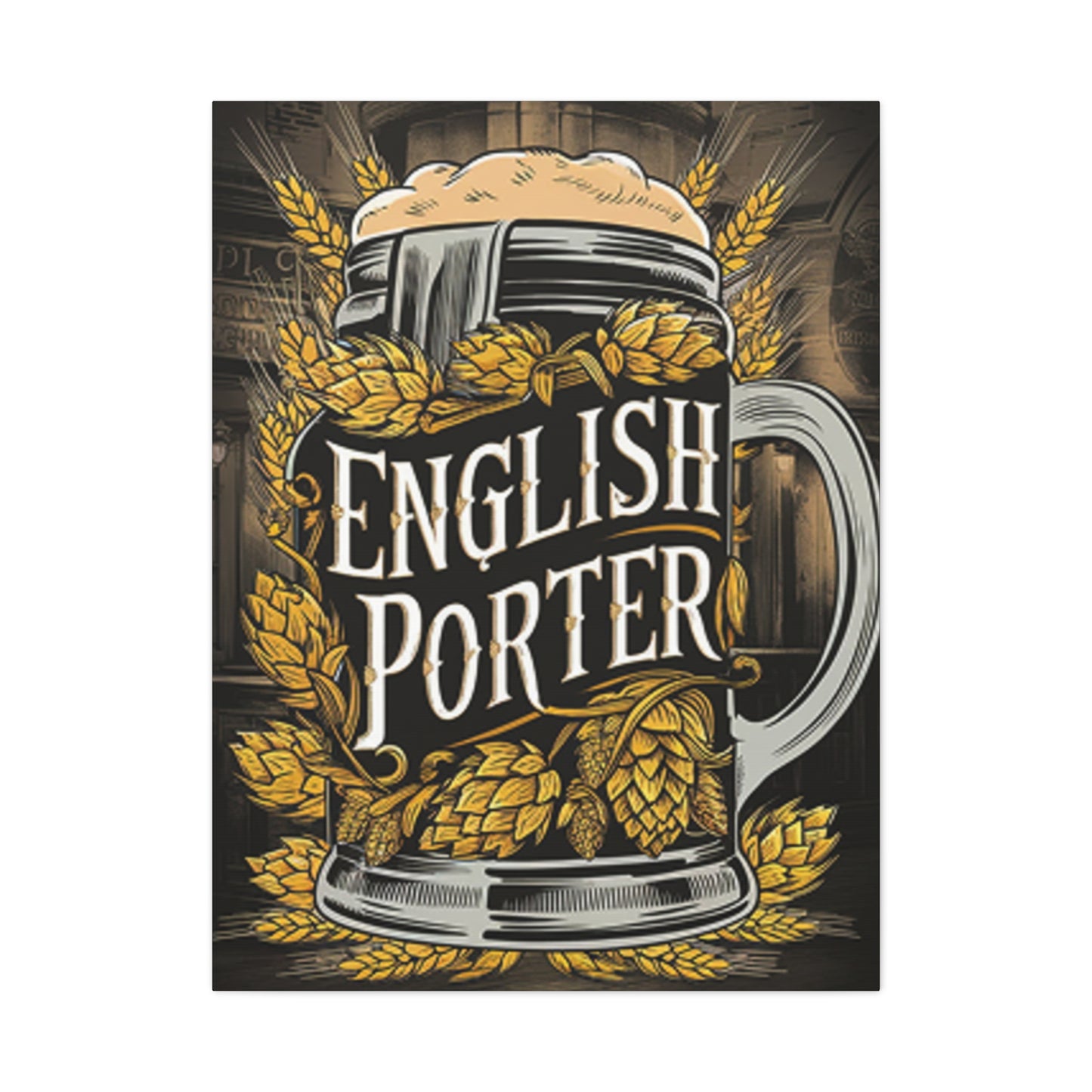
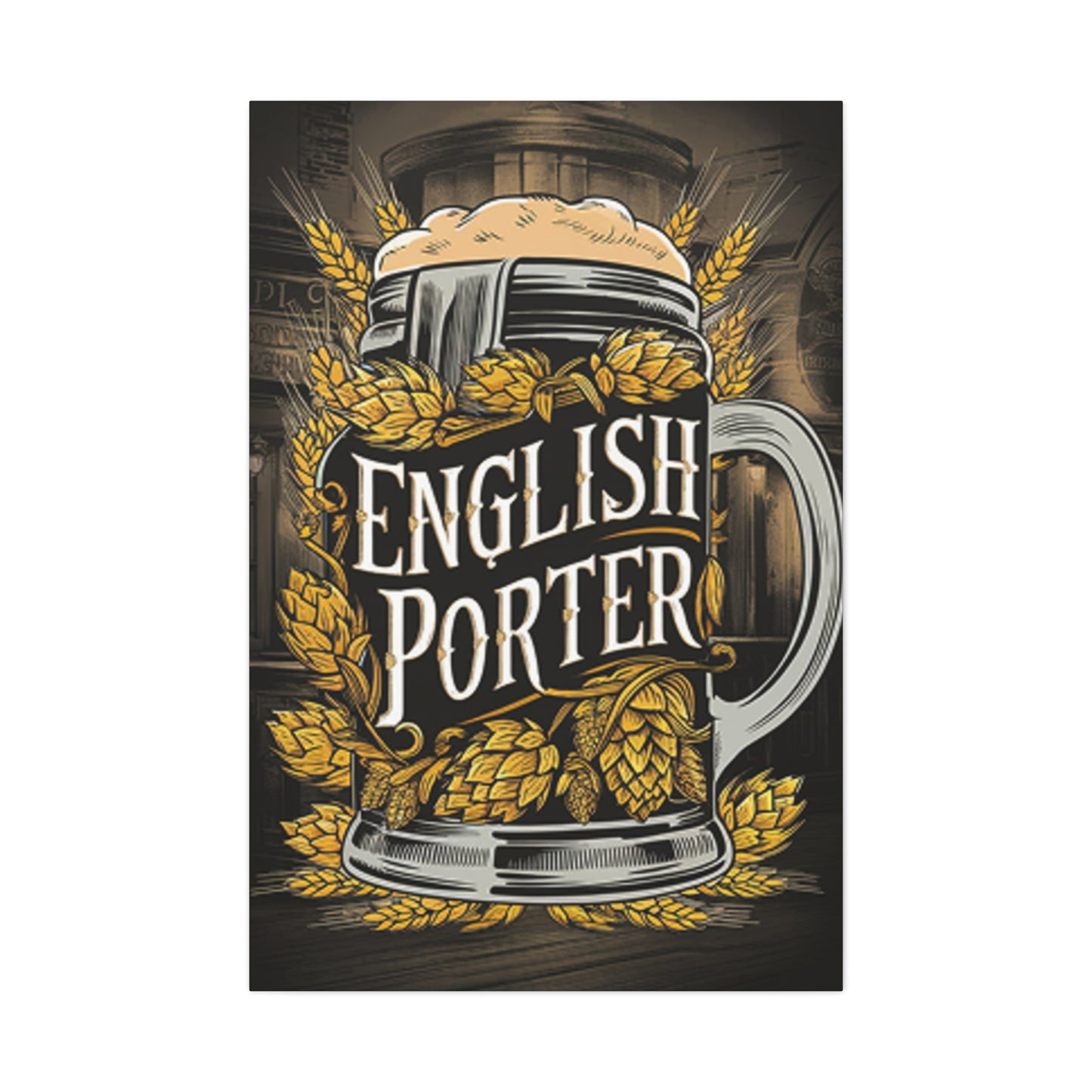
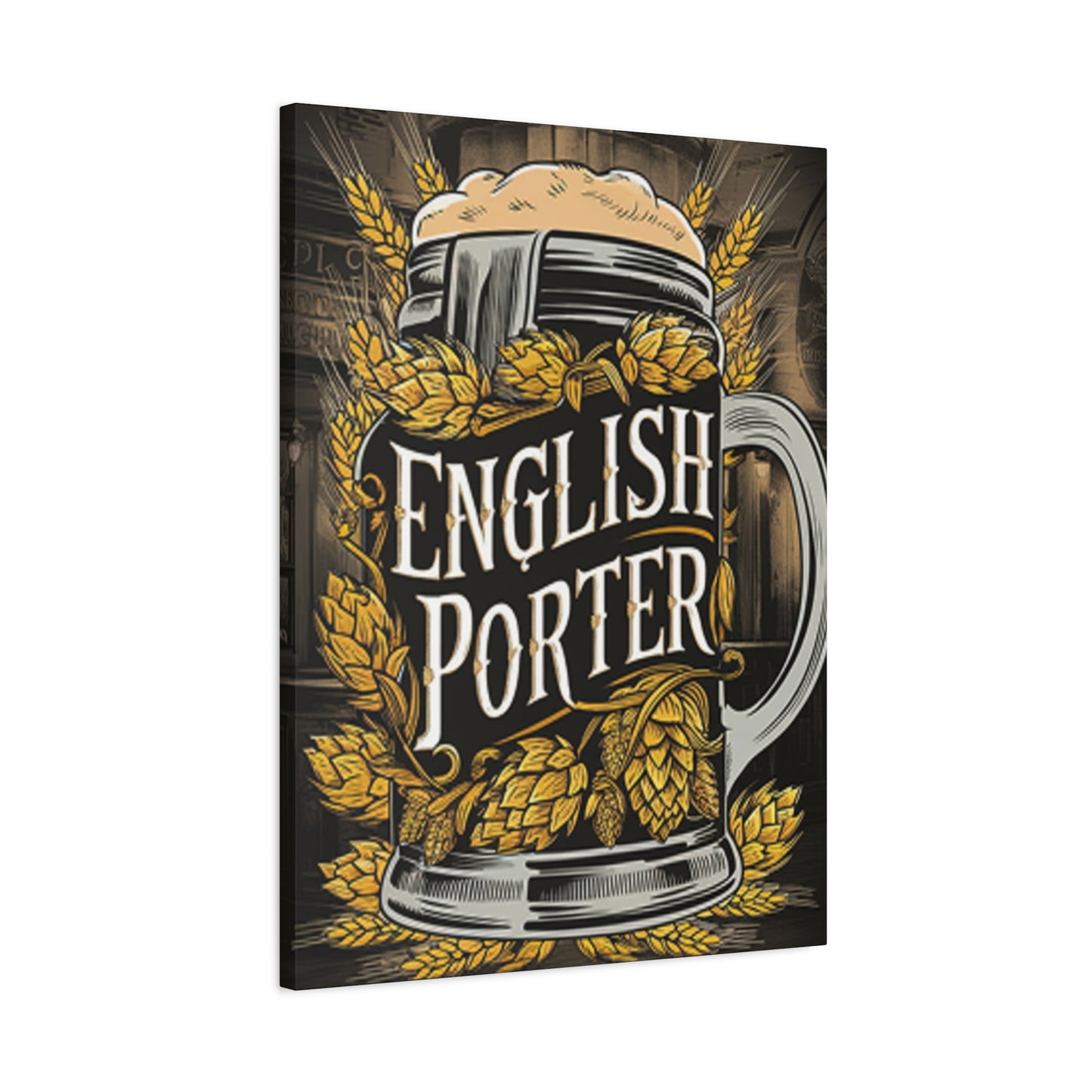
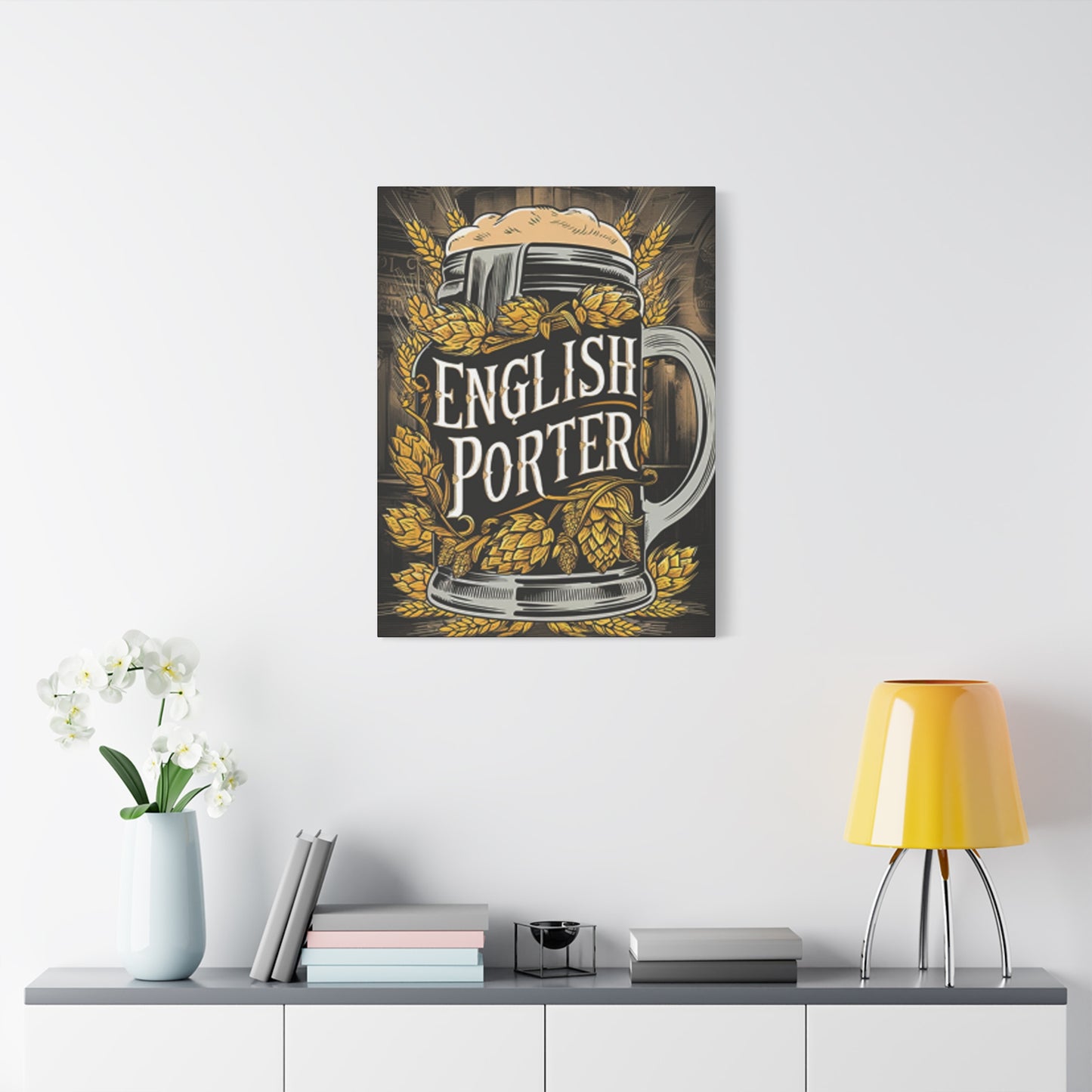

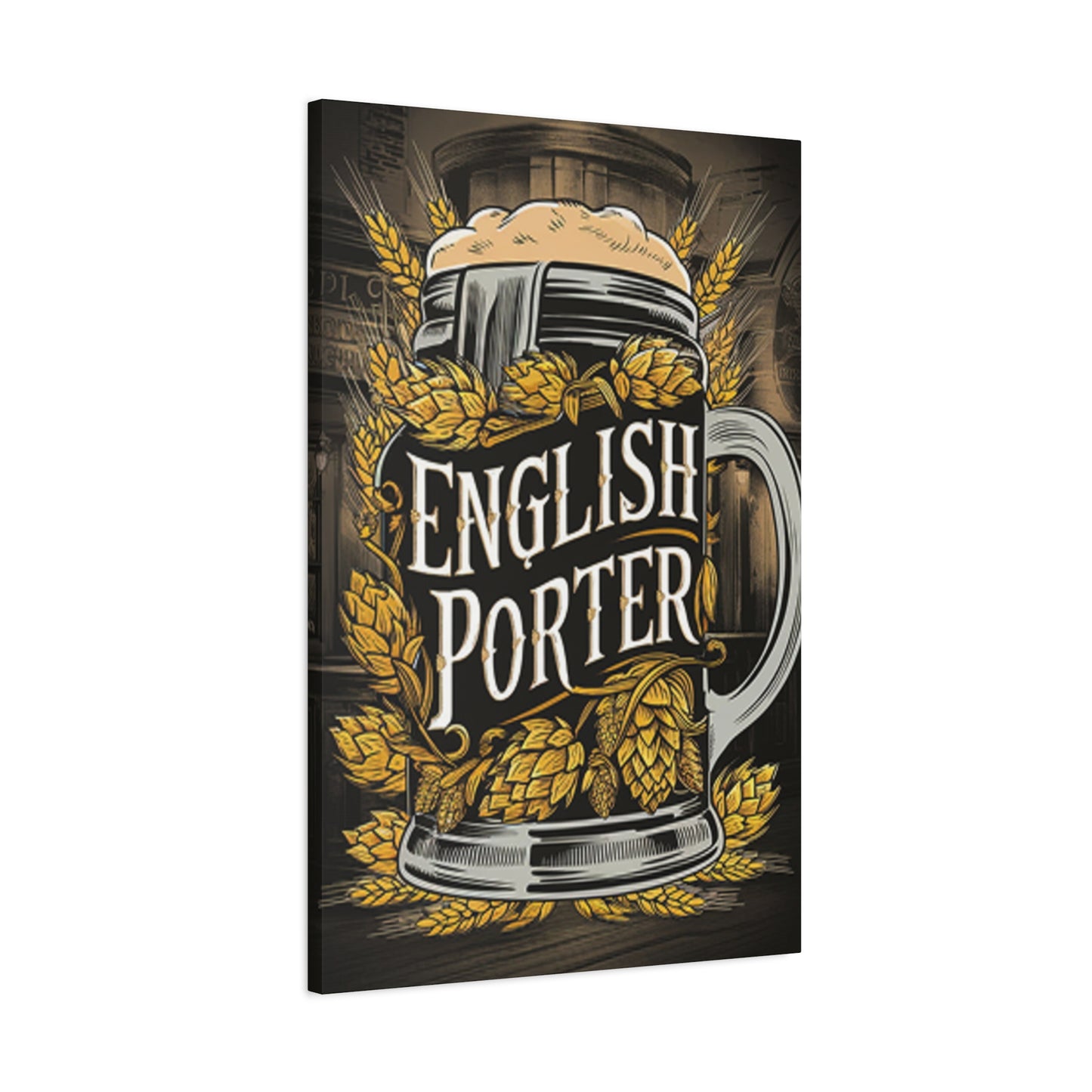
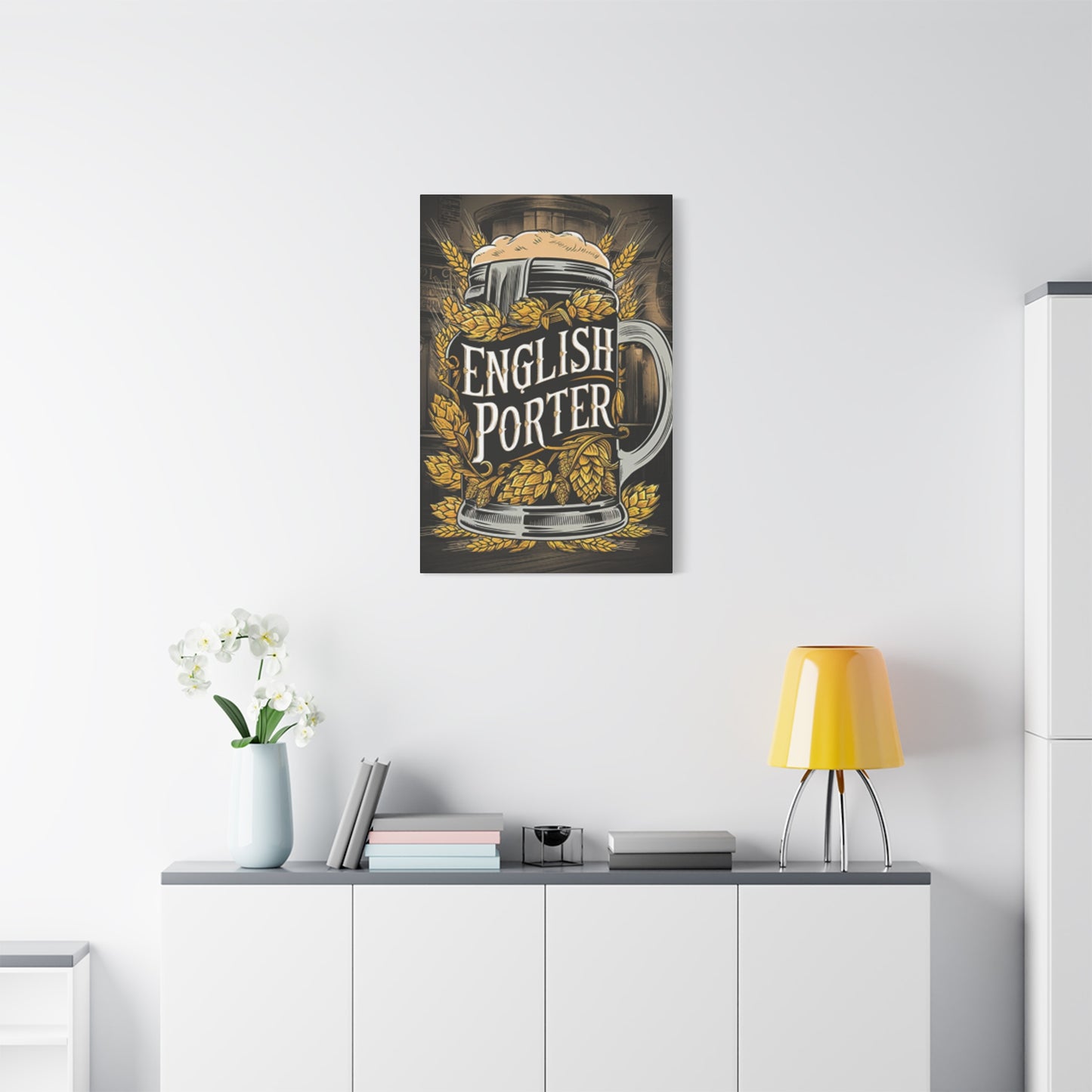

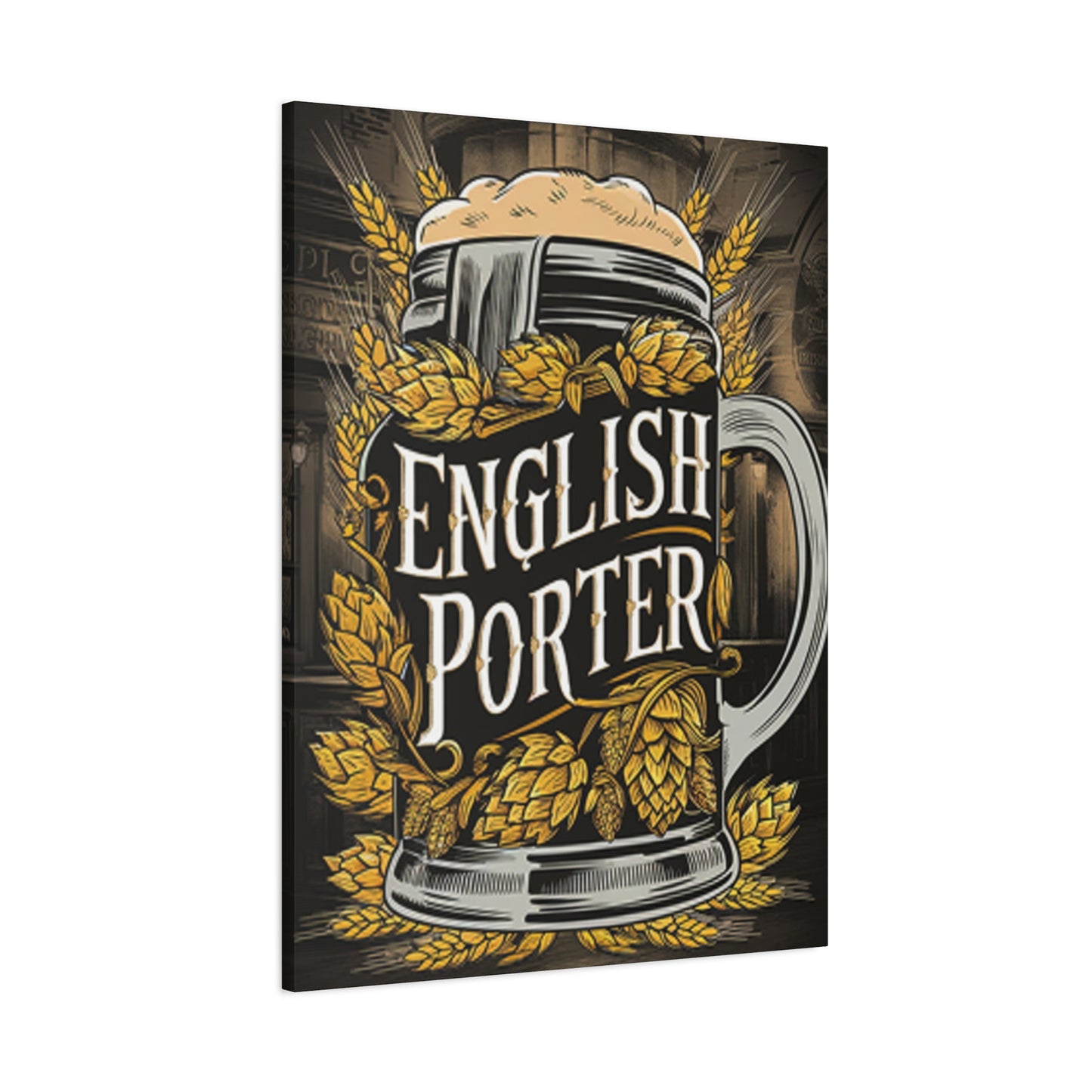
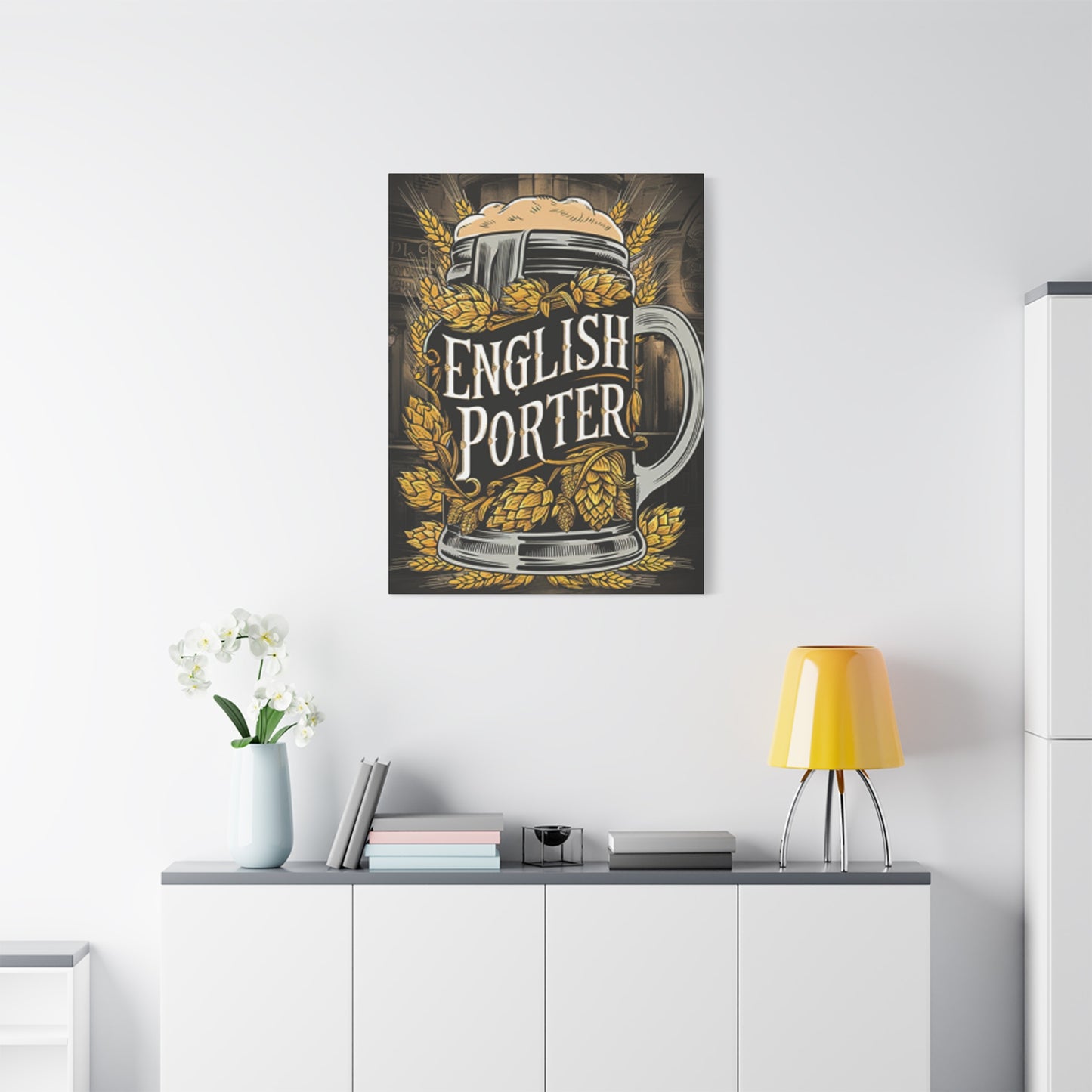


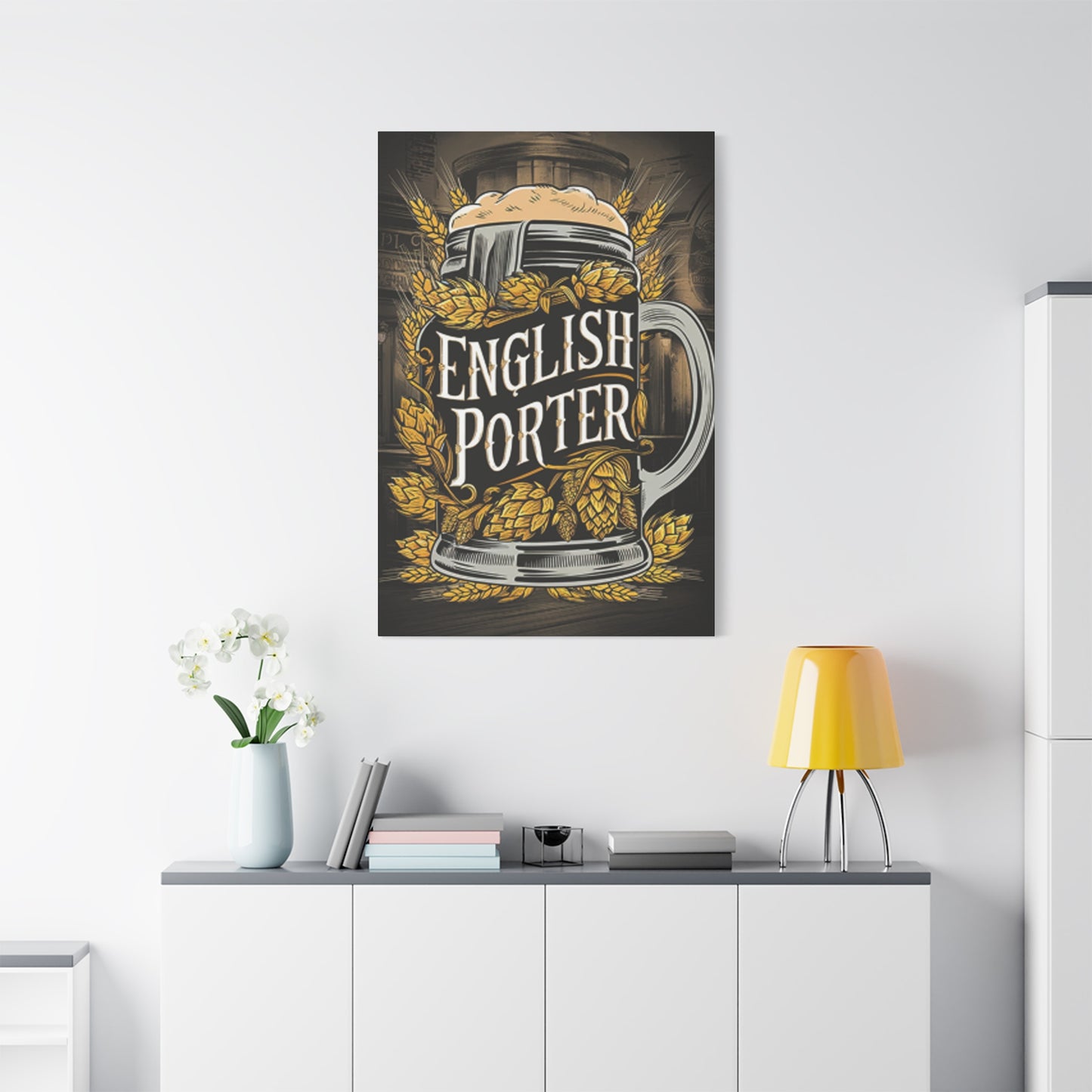

Whiskey Wall Art Collection: From Classic Porter Labels to Modern Typography Masterpieces
The world of whiskey-themed wall art has evolved into a sophisticated realm where classic meets contemporary, bringing the rich heritage of distillation culture directly into our living environments. From the ornate elegance of vintage English Porter whiskey labels to the sleek minimalism of modern bottle prints, whiskey wall art represents more than mere decoration - it embodies a lifestyle, a passion, and an appreciation for craftsmanship that spans centuries.
This comprehensive exploration delves into every facet of whiskey wall art, examining how these pieces transform ordinary rooms into extraordinary environments that celebrate the golden spirit's legacy. Whether you're a seasoned collector seeking rare distillery heritage posters or a newcomer looking to incorporate warm, amber-toned artwork into your home, this guide provides the knowledge and inspiration needed to curate a collection that speaks to both your aesthetic sensibilities and your appreciation for whiskey culture.
The art of displaying whiskey-themed artwork goes beyond simple placement on walls. It involves understanding the historical significance of each piece, recognizing quality craftsmanship in reproduction work, and knowing how to balance vintage authenticity with contemporary design elements. From rustic barrel art that evokes the atmosphere of traditional distilleries to sophisticated typography posters that celebrate famous whiskey quotes, each category offers unique opportunities to express personal style while honoring the time-tested traditions of whiskey making.
Classic English Porter Whiskey Labels: Timeless Elegance in Vintage Appeal
Classic English Porter whiskey labels represent the pinnacle of Victorian-era commercial artistry, where elaborate typography met intricate illustration to create marketing materials that have transcended their original purpose to become coveted collectibles. These labels, originally designed for bottles produced in the 18th and 19th centuries, showcase the meticulous attention to detail that characterized the golden age of whiskey production in England and Ireland.
The artistic elements found on authentic Porter whiskey labels include ornate borders featuring Celtic knots, heraldic crests that spoke to family brewing traditions, and elaborate script lettering that required skilled craftsmen to execute. Many labels incorporated gold leaf accents, embossed elements, and multi-color printing techniques that were considered cutting-edge technology for their time. The imagery often featured distillery buildings, pastoral scenes of grain fields, or symbolic representations of quality and tradition such as oak trees, grain sheaves, and copper pot stills.
Collectors and enthusiasts prize original Porter whiskey labels for their historical significance and artistic merit. These pieces provide tangible connections to the era when whiskey production was transitioning from small-batch artisanal operations to larger commercial enterprises. The labels tell stories of family dynasties, regional brewing traditions, and the evolution of marketing strategies in the spirits industry.
Reproduction Porter whiskey labels for wall art purposes must maintain the integrity of the original designs while adapting to modern printing technologies. High-quality reproductions utilize archival papers, fade-resistant inks, and careful attention to color matching to ensure longevity and visual accuracy. Many contemporary artists and printmakers specialize in recreating these historical labels, often working from museum collections or private archives to ensure authenticity.
The appeal of Porter whiskey labels extends beyond whiskey enthusiasts to include collectors of Victorian ephemera, typography enthusiasts, and those who appreciate the intersection of commercial art and social history. These labels represent a time when even utilitarian objects were designed with aesthetic consideration, reflecting broader cultural values about craftsmanship and presentation.
When incorporating Porter whiskey labels into modern wall art displays, consideration must be given to their historical context and visual weight. These pieces work exceptionally well in traditional settings, complementing dark wood furniture, leather upholstery, and warm color schemes. They also create striking contrasts in contemporary environments, where their ornate details can serve as focal points against minimalist backgrounds.
The framing of Porter whiskey labels requires careful attention to preservation and presentation. Museum-quality matting and UV-protective glass help preserve the colors and prevent deterioration, while frame selections should complement rather than compete with the labels' intricate designs. Traditional gold or dark wood frames often work best, though modern metal frames can create interesting juxtapositions in contemporary settings.
Authentication of original Porter whiskey labels requires expertise in paper types, printing methods, and historical knowledge of distillery operations. Factors such as paper composition, ink characteristics, and typographical details can help distinguish authentic pieces from later reproductions. Serious collectors often consult with experts or reference comprehensive catalogs when evaluating potential acquisitions.
The market for Porter whiskey labels continues to grow as appreciation for vintage advertising art increases. Rare labels from defunct distilleries command premium prices, while more common examples remain accessible to beginning collectors. The key to successful collecting lies in understanding the historical context, recognizing quality reproduction work, and developing an eye for the subtle details that distinguish exceptional pieces from ordinary examples.
Vintage Whiskey Advertisements: Windows into Commercial History
Vintage whiskey advertisements represent a fascinating intersection of commercial art, social history, and marketing evolution, offering glimpses into how spirits were promoted across different eras and cultural contexts. These advertisements, ranging from newspaper inserts of the 1800s to magazine spreads of the mid-20th century, showcase changing artistic styles, marketing messages, and societal attitudes toward alcohol consumption.
Early whiskey advertisements from the late 1800s and early 1900s often emphasized medicinal properties and social respectability, reflecting the cultural context of an era when alcohol was frequently marketed for its supposed health benefits. These ads typically featured formal typography, testimonials from medical professionals, and imagery that conveyed trust and authority. The artistic styles reflected broader design movements of their times, incorporating Art Nouveau elements, ornate borders, and detailed illustrations that spoke to quality and craftsmanship.
The Prohibition era, despite legal restrictions on alcohol sales, saw the continuation of whiskey advertising in coded forms, with companies promoting "medicinal" spirits or preparing for the eventual repeal of the Volstead Act. Post-Prohibition advertisements experienced a renaissance of creativity, with agencies developing sophisticated campaigns that emphasized sophistication, social status, and quality of life associations with whiskey consumption.
Mid-century whiskey advertisements reached new heights of artistic achievement, with major agencies commissioning renowned illustrators and photographers to create compelling visual narratives around their brands. These campaigns often featured lifestyle imagery, celebrity endorsements, and carefully crafted messages about success, masculinity, and social achievement. The artistic quality of these advertisements often rivaled that of fine art prints, with attention to composition, color theory, and visual impact that made them effective both as marketing tools and aesthetic objects.
The collection of vintage whiskey advertisements requires understanding of printing techniques, paper types, and historical contexts that influenced their creation. Original advertisements printed in magazines represent more accessible entry points for collectors, while poster-sized promotional materials and point-of-sale displays command higher prices due to their rarity and visual impact. The condition of vintage advertisements significantly affects their value, with factors such as color fading, paper deterioration, and physical damage influencing collectibility.
Contemporary reproductions of vintage whiskey advertisements serve important roles in making historically significant designs accessible to modern collectors and decorators. High-quality reproductions utilize period-appropriate printing techniques and color palettes to maintain the aesthetic integrity of original pieces while providing affordable alternatives to rare originals. Many publishers specialize in creating museum-quality reproductions of classic whiskey advertisements, working with collectors and institutions to ensure accuracy and quality.
The display of vintage whiskey advertisements requires consideration of both their historical significance and their role as decorative elements. These pieces work particularly well in themed environments such as home bars, game rooms, and entertainment areas, where their commercial origins align with their functional contexts. However, their artistic merit also makes them suitable for more formal display settings, where they can be appreciated for their design qualities and historical importance.
Framing vintage whiskey advertisements presents opportunities to enhance their visual impact while protecting them from environmental damage. Period-appropriate frame styles can reinforce the historical context of the pieces, while contemporary framing can create interesting dialogues between past and present design aesthetics. Conservation-quality materials help preserve the advertisements for future generations while ensuring their continued visual appeal.
The study of vintage whiskey advertisements provides insights into broader cultural trends, marketing evolution, and artistic movements of their respective eras. These pieces serve as primary source materials for researchers interested in commercial art history, alcohol industry development, and changing social attitudes toward spirits consumption. Their value extends beyond mere decoration to encompass educational and historical significance.
Authentication of vintage whiskey advertisements requires knowledge of printing techniques, paper types, and publishing histories of various periodicals and promotional materials. Factors such as ink composition, paper aging characteristics, and typographical details can help distinguish original pieces from later reproductions. Serious collectors often develop expertise in specific brands, time periods, or artistic styles to guide their acquisition strategies.
The market for vintage whiskey advertisements continues to expand as appreciation for commercial art history grows among collectors and decorators. Prices vary widely based on factors such as rarity, condition, brand recognition, and artistic quality, with exceptional pieces commanding significant premiums while more common examples remain accessible to beginning collectors.
Minimalist Whiskey Bottle Prints: Modern Simplicity Meets Classic Form
Minimalist whiskey bottle prints represent a contemporary approach to celebrating whiskey culture, stripping away ornate details to focus on the essential forms and proportions that make whiskey bottles iconic design objects. This artistic movement embraces the philosophy that less is more, highlighting the elegant silhouettes and refined proportions that have made certain bottle shapes instantly recognizable symbols of quality and tradition.
The minimalist aesthetic in whiskey bottle art draws inspiration from various design movements, including Bauhaus principles, Scandinavian design philosophy, and contemporary graphic design trends. These influences combine to create artwork that celebrates the fundamental beauty of whiskey bottle forms without relying on decorative embellishments or complex color schemes. The focus remains on line, shape, proportion, and negative surrounding the bottle silhouettes.
Contemporary artists working in the minimalist whiskey bottle print genre often employ limited color palettes, geometric compositions, and clean typography to create pieces that feel both modern and timeless. Common approaches include single-color silhouettes against contrasting backgrounds, line drawings that capture essential bottle characteristics, and abstract interpretations that reduce bottle forms to their most basic geometric components.
The appeal of minimalist whiskey bottle prints extends beyond whiskey enthusiasts to include collectors of contemporary art, design professionals, and those who appreciate clean, uncluttered aesthetic approaches. These pieces work particularly well in modern and contemporary environments, where their simplified forms can serve as sophisticated accent pieces without overwhelming other design elements.
Technical execution of minimalist whiskey bottle prints requires careful attention to proportion, line quality, and compositional balance. Artists must distill complex three-dimensional forms into two-dimensional representations while maintaining the essential characteristics that make each bottle shape distinctive and recognizable. This process of reduction and refinement requires deep understanding of both the source material and the principles of effective graphic design.
Digital technologies have revolutionized the creation and reproduction of minimalist whiskey bottle prints, allowing artists to achieve precise lines, consistent colors, and perfect geometric relationships that would be challenging to execute through traditional printing methods. Vector graphics software enables artists to create scalable artwork that maintains its quality across various sizes and applications, from small accent pieces to large-scale wall installations.
The selection of paper types and printing methods for minimalist whiskey bottle prints significantly impacts their final appearance and longevity. High-quality archival papers provide stable foundations for pigment-based inks that resist fading and color shifting over time. Printing techniques such as giclée reproduction ensure accurate color representation and fine detail rendering that maintains the precision essential to minimalist aesthetics.
Framing minimalist whiskey bottle prints offers opportunities to enhance their clean aesthetic through careful selection of contemporary frame styles and matting approaches. Simple, geometric frames in materials such as brushed aluminum, natural wood, or sleek plastic can complement the minimalist philosophy while providing necessary protection for the artwork. Floating mounts and shadow box presentations can create visual interest while maintaining the clean lines essential to minimalist design.
Color theory plays crucial roles in successful minimalist whiskey bottle prints, with artists carefully selecting palettes that support the overall aesthetic while maintaining visual interest and emotional resonance. Monochromatic schemes, complementary color pairs, and carefully controlled accent colors can create sophisticated compositions that celebrate whiskey culture while adhering to minimalist principles.
The versatility of minimalist whiskey bottle prints makes them suitable for various display contexts, from home bars and entertainment areas to professional offices and commercial establishments. Their clean aesthetic allows them to integrate seamlessly with existing decor while providing subtle references to whiskey appreciation and design sophistication.
Series and collection approaches in minimalist whiskey bottle prints allow artists and collectors to explore variations on themes while maintaining cohesive aesthetic approaches. Common series concepts include different bottle shapes rendered in consistent styles, color variations on single bottle forms, and progressive abstractions that show the evolution from representational to purely geometric interpretations.
The market for minimalist whiskey bottle prints reflects broader trends in contemporary art and design, with collectors seeking pieces that combine cultural references with sophisticated aesthetic approaches. Limited edition prints by established artists command premium prices, while emerging artists and digital platforms provide more accessible entry points for beginning collectors interested in this contemporary art form.
Framed Whiskey Labels: Preserving History Through Professional Presentation
Framed whiskey labels represent one of the most accessible and rewarding approaches to collecting and displaying whiskey-related artwork, offering opportunities to preserve historical artifacts while creating sophisticated decorative displays. The practice of framing individual whiskey labels allows collectors to highlight specific design elements, historical periods, or distillery heritage while protecting these often fragile paper artifacts from environmental damage and handling.
The selection of whiskey labels for framing requires consideration of various factors including historical significance, artistic merit, condition, and personal collecting goals. Original labels from defunct distilleries offer connections to lost chapters of whiskey history, while labels from continuing operations can represent evolution in design approaches and marketing strategies. Rare or limited edition labels often command premium prices, while more common examples provide affordable entry points for beginning collectors.
Professional framing of whiskey labels involves multiple technical considerations designed to ensure long-term preservation while maximizing visual impact. Museum-quality matting materials that are acid-free and lignin-free prevent chemical reactions that could cause discoloration or deterioration over time. UV-protective glazing shields the labels from harmful light exposure while maintaining clarity and color accuracy for viewing.
The matting process for whiskey labels requires careful attention to proportions, color relationships, and visual hierarchy. Mat colors should complement rather than compete with the label designs, with neutral tones often providing the most versatile backgrounds for various label styles and color schemes. Multiple mat layers can create depth and visual interest while providing additional protection for the labeled artwork.
Frame selection for whiskey labels should consider both the historical context of the pieces and their intended display environment. Traditional wood frames in warm tones can enhance the vintage appeal of historical labels, while contemporary metal frames can create interesting juxtapositions that highlight design elements through contrast. The scale of frames should be proportionate to the label sizes while providing adequate visual weight for effective wall display.
Conservation considerations for framed whiskey labels include environmental factors such as temperature, humidity, and light exposure that can affect the longevity of paper artifacts. Proper framing techniques create protective micro-environments that buffer against environmental fluctuations while allowing for safe display and viewing. Reversible mounting techniques ensure that labels can be safely removed from frames if necessary without damage.
Documentation and provenance research for framed whiskey labels add significant value to collections while providing important historical context for display and appreciation. Records of distillery operations, label printing dates, and marketing campaigns can enhance understanding and appreciation of individual pieces while supporting their authenticity and historical significance.
Display strategies for framed whiskey labels include both individual presentation approaches and group arrangements that create thematic or aesthetic relationships between pieces. Single label displays allow for detailed appreciation of individual design elements, while grouped arrangements can illustrate historical evolution, compare regional styles, or create visually compelling compositions through size, color, and style variations.
The market for frameable whiskey labels encompasses both original artifacts and high-quality reproductions, with prices varying significantly based on factors such as age, rarity, condition, and brand recognition. Original labels from famous distilleries or significant historical periods command premium prices, while reproduction labels provide affordable alternatives for decorative purposes.
Specialized suppliers and auction houses serve the growing market for collectible whiskey labels, offering authentication services, condition assessments, and expert knowledge about market values and collecting strategies. Online platforms have expanded access to international markets while providing opportunities for collectors to buy, sell, and trade labels with enthusiasts worldwide.
The educational value of framed whiskey labels extends beyond their decorative function to include lessons in commercial art history, typography evolution, and industry development. These pieces serve as primary source materials for understanding how whiskey marketing has evolved while preserving examples of commercial artistry that might otherwise be lost to time.
Care and maintenance of framed whiskey labels requires ongoing attention to environmental conditions, frame integrity, and glazing quality. Regular inspection can identify potential problems before they cause damage, while professional conservation services can address issues that arise over time. Proper storage and handling procedures help ensure that collections remain in optimal condition for long-term enjoyment and preservation.
Rustic Whiskey Signs: Embracing Authentic Americana
Rustic whiskey signs embody the heartland spirit of American whiskey culture, evoking images of weathered barn wood, hand-painted lettering, and the authentic charm of traditional distillery operations. These pieces celebrate the connection between whiskey production and rural American values, emphasizing craftsmanship, tradition, and the honest work ethic that characterized early whiskey making in the United States.
The aesthetic appeal of rustic whiskey signs lies in their ability to convey authenticity through weathered textures, natural materials, and handcrafted construction techniques. Genuine vintage signs often feature paint that has aged naturally through exposure to weather and time, creating unique patinas and surface textures that cannot be replicated through artificial aging processes. The imperfections and wear patterns on authentic rustic signs tell stories of their service life and environmental exposure.
Materials commonly used in rustic whiskey signs include reclaimed barn wood, weathered cedar planks, and salvaged materials from historical buildings or industrial operations. These materials bring inherent character and history to the signs while providing foundations that complement the whiskey theme through their connections to American rural heritage and traditional craftsmanship values.
Hand-painted lettering on rustic whiskey signs represents a lost art form that required skill, patience, and artistic sensibility to execute effectively. Traditional sign painters used specialized brushes, high-quality paints, and time-tested techniques to create lettering that remained legible and visually appealing despite outdoor exposure. The slight irregularities and human touches evident in hand-painted signs provide warmth and personality that distinguish them from machine-produced alternatives.
Contemporary artisans creating rustic whiskey signs often combine traditional techniques with modern materials and tools to achieve authentic appearances while ensuring durability and longevity. Specialized aging techniques, distressing methods, and weathering processes can simulate the natural aging that occurs over decades of exposure, though purists often prefer the genuine patinas that develop only through actual time and environmental exposure.
The typography choices for rustic whiskey signs typically reflect historical periods and regional styles associated with American whiskey production. Bold, sans-serif lettering evokes the straightforward communication style of early advertising, while script fonts can suggest elegance and craftsmanship. The scale and proportion of lettering must be carefully balanced to ensure legibility while maintaining visual harmony with the overall sign design.
Color palettes for rustic whiskey signs draw inspiration from natural materials and traditional paint formulations available during the golden age of American whiskey production. Earth tones such as barn red, tobacco brown, and cream white create authentic period appearances, while accent colors might include gold leaf highlights or deep green trim that complement the natural wood backgrounds.
The incorporation of graphic elements in rustic whiskey signs might include distillery imagery, grain motifs, barrel illustrations, or regional symbols that connect the signs to specific geographical areas or cultural traditions. These decorative elements must be carefully integrated to enhance rather than overwhelm the overall design, maintaining the balance between visual interest and rustic simplicity.
Display considerations for rustic whiskey signs include both indoor and outdoor applications, though most collectors prefer indoor display to protect these pieces from further weathering and potential damage. The substantial visual weight of rustic signs requires careful placement to ensure they enhance rather than overwhelm their display environments while maintaining appropriate sight lines and viewing distances.
Authentication of vintage rustic whiskey signs requires expertise in materials, construction techniques, and historical knowledge of signage practices and distillery operations. Factors such as paint composition, wood types, hardware characteristics, and wear patterns can help distinguish authentic period pieces from later reproductions or artificial aging attempts.
The market for rustic whiskey signs encompasses both original vintage pieces and contemporary artisan creations, with prices reflecting factors such as age, size, condition, artistic quality, and historical significance. Original signs from defunct distilleries or significant historical locations command premium prices, while skilled contemporary artisans can create new pieces that capture the authentic spirit of traditional signage.
Care and maintenance of rustic whiskey signs requires understanding of wood preservation, paint stability, and environmental factors that can affect their condition over time. Indoor display helps protect these pieces from continued weathering while allowing for controlled environmental conditions that support long-term preservation.
The cultural significance of rustic whiskey signs extends beyond their decorative function to encompass broader themes of American heritage, craftsmanship traditions, and the evolution of commercial signage. These pieces serve as tangible connections to an era when whiskey production was closely tied to local communities and regional identities, reflecting values and aesthetics that continue to resonate with contemporary collectors and enthusiasts.
Whiskey Barrel Art Ideas: Repurposing Industrial Heritage
Whiskey barrel art represents one of the most creative and sustainable approaches to whiskey-themed decoration, transforming functional industrial objects into unique artistic statements while preserving the heritage and character embedded in these time-honored containers. The repurposing of whiskey barrels into art pieces celebrates both environmental consciousness and the rich history of whiskey aging processes that have remained largely unchanged for centuries.
The inherent beauty of whiskey barrels lies in their functional design perfected through generations of cooperage craftsmanship. The curved staves, metal hoops, and toast patterns on the interior wood surfaces create visual textures and forms that have attracted artists and craftspeople seeking to transform these utilitarian objects into decorative pieces that honor their original purpose while serving new functions.
Authentic whiskey barrels carry the accumulated character of their service lives, including wine stains from the aging spirits, char patterns from the toasting process, and subtle dimensional changes that occur through cycles of expansion and contraction. This natural patina and weathering cannot be replicated artificially, making genuine used barrels particularly valuable for artistic applications that celebrate authenticity and history.
Contemporary artists working with whiskey barrels employ various approaches to create wall art while respecting the integrity of the original barrel construction. Common techniques include sectioning barrels to create curved wall panels, incorporating staves into larger artistic compositions, and utilizing the natural circular forms of barrel heads as foundations for painted or carved decorative elements.
The preparation of whiskey barrels for artistic applications requires understanding of wood properties, moisture content, and structural considerations that affect the stability and appearance of finished pieces. Proper cleaning and treatment help remove residual spirits while preserving the wood's natural character, and stabilization techniques ensure that artistic modifications don't compromise the structural integrity of the pieces.
Typography and graphics applications on whiskey barrel art often incorporate themes related to the original barrel contents, distillery heritage, or whiskey culture in general. Hand-painted lettering, branded elements, and decorative motifs can transform plain barrel surfaces into sophisticated artistic statements that celebrate both craftsmanship traditions and contemporary design sensibilities.
The integration of lighting elements into whiskey barrel art creates opportunities for dramatic visual effects that highlight the natural textures and forms of the wood while providing functional illumination for display areas. LED strip lights, individual spotlights, and creative backlighting approaches can transform barrel art pieces from static decorative objects into dynamic focal points that change appearance with lighting conditions.
Mounting and display systems for whiskey barrel art must accommodate the curved surfaces and substantial weight of barrel components while providing secure attachment to wall surfaces. Specialized hardware and mounting techniques ensure that these pieces can be safely displayed while maintaining their visual impact and accessibility for maintenance or relocation.
Preservation considerations for whiskey barrel art include protection from moisture, temperature fluctuations, and pest damage that can affect wood components over time. Appropriate finishing treatments can enhance the natural beauty of the wood while providing protection against environmental factors that might cause deterioration or damage.
The customization potential of whiskey barrel art allows collectors and decorators to create pieces that reflect personal preferences, specific brand loyalties, or thematic design approaches. Artists can incorporate family names, significant dates, favorite whiskey quotes, or custom graphics that transform generic barrel art into personalized decorative statements.
Series and collection approaches to whiskey barrel art might include pieces created from barrels with different aging histories, various distillery origins, or progression designs that show different stages of barrel preparation or artistic development. These collection strategies provide opportunities for expanded decorative impact while maintaining thematic coherence.
The market for whiskey barrel art encompasses both original pieces created from authentic used barrels and reproduction pieces made from new wood materials treated to simulate aging effects. Prices vary based on factors such as barrel authenticity, artistic quality, size, and customization level, with premium prices commanded by pieces created from barrels with documented provenance from famous distilleries.
Sustainability aspects of whiskey barrel art appeal to environmentally conscious collectors who appreciate the recycling and repurposing of materials that might otherwise be discarded after their primary industrial use. This approach to decoration aligns with broader environmental values while creating unique artistic pieces that cannot be mass-produced through conventional manufacturing processes.
The collaborative potential between artists and distilleries has created opportunities for limited edition barrel art pieces that combine authentic materials with professional artistic execution. These partnerships can result in unique pieces that carry both artistic merit and historical documentation of their origins and creation processes.
Industrial Style Whiskey Art: Celebrating Manufacturing Heritage
Industrial style whiskey art draws inspiration from the mechanical processes, architectural elements, and manufacturing heritage that characterize modern whiskey production facilities. This aesthetic approach celebrates the intersection of traditional craftsmanship with industrial efficiency, highlighting the machinery, equipment, and structural elements that support large-scale whiskey production while maintaining quality and consistency standards.
The visual vocabulary of industrial whiskey art includes elements such as copper pot stills, distillation columns, steam pipes, gear mechanisms, and the steel framework that supports modern distillery operations. These functional components possess inherent sculptural qualities and visual interest that translate effectively into artistic representations, whether through realistic depictions or abstract interpretations that capture their essential forms and proportions.
Materials commonly associated with industrial whiskey art include weathered steel, copper patina, cast iron elements, and the warm tones of oxidized metals that develop through exposure to heat and moisture in distillery environments. These material characteristics provide rich color palettes and textural opportunities that artists can exploit to create pieces with authentic industrial character and visual depth.
The typography associated with industrial whiskey art often reflects the straightforward communication requirements of industrial environments, featuring bold sans-serif fonts, stencil lettering, and utilitarian design approaches that prioritize legibility and durability over decorative flourishes. These typographical choices support the overall aesthetic while maintaining readability and visual impact.
Contemporary artists working in the industrial whiskey art genre often employ mixed media approaches that combine traditional artistic techniques with industrial materials and processes. Techniques such as metal patination, rust development, and welding can create authentic industrial surfaces and textures, while printing on metal substrates or incorporating actual industrial components adds dimensional interest and tactile appeal.
The color palette for industrial whiskey art typically emphasizes the warm tones of copper and brass, the cool grays of steel and iron, and the rich browns of rust and oxidation. These natural material colors provide sophisticated foundations for artistic compositions while maintaining connections to authentic industrial environments and processes.
Scale considerations for industrial whiskey art must balance visual impact with practical display requirements, as the industrial aesthetic often benefits from substantial dimensions that convey the magnitude and importance of industrial processes. However, residential display applications may require proportional adjustments that maintain the industrial character while fitting appropriately within domestic environments.
The incorporation of functional elements into industrial whiskey art creates opportunities for pieces that serve dual purposes as both decorative objects and practical items such as lighting fixtures, shelving systems, or bar accessories. These hybrid approaches align with industrial design principles that value efficiency and multi-functionality while creating unique decorative solutions.
Lighting design for industrial whiskey art can enhance the dimensional qualities and material textures that characterize this aesthetic approach. Industrial lighting fixtures, exposed bulb applications, and dramatic shadowing effects can transform static art pieces into dynamic installations that change appearance throughout the day and respond to different lighting conditions.
The authentication of vintage industrial whiskey art elements requires knowledge of manufacturing processes, material properties, and historical equipment designs that can help distinguish authentic industrial artifacts from reproduction pieces. Factors such as wear patterns, material composition, and construction techniques provide clues about the age and authenticity of industrial components used in artistic applications.
Display strategies for industrial whiskey art often benefit from environments that complement the aesthetic through architectural elements, furniture selections, and accessory choices that support the industrial theme. Exposed brick walls, concrete floors, and metal furnishings can create cohesive environments that enhance the impact of industrial whiskey art while maintaining authentic industrial character.
The market for industrial whiskey art reflects broader trends in industrial design and vintage industrial collectibles, with authentic pieces commanding premium prices while high-quality reproductions provide accessible alternatives for decorators seeking industrial aesthetic elements. Limited edition pieces by established artists often represent significant investments with potential appreciation over time.
Custom fabrication opportunities in industrial whiskey art allow collectors to commission pieces that incorporate specific industrial elements, personal preferences, or site-specific requirements while maintaining the authentic character and visual impact of the industrial aesthetic. Skilled metalworkers and artists can create unique pieces that combine artistic vision with industrial authenticity.
The educational value of industrial whiskey art extends to lessons about manufacturing history, technological development, and the evolution of distillery equipment and processes. These pieces can serve as starting points for discussions about industrial heritage, technological innovation, and the balance between tradition and efficiency in modern whiskey production.
Maintenance requirements for industrial whiskey art may include ongoing attention to metal finishes, rust prevention, and structural integrity that ensure these pieces remain safe and visually appealing over time. Understanding of metal properties and appropriate protective treatments helps preserve industrial art pieces while maintaining their authentic appearance and character.
Whiskey History on Walls: Educational Storytelling Through Art
Whiskey history wall art serves the dual purpose of decoration and education, presenting the rich and complex story of whiskey development through visual narratives that inform viewers while enhancing their environments. This approach to whiskey-themed decoration emphasizes historical accuracy, educational value, and artistic presentation to create pieces that reward both casual viewing and detailed examination.
The scope of whiskey history suitable for wall art encompasses numerous themes including the geographic spread of whiskey production, the evolution of distillation techniques, the impact of historical events on the whiskey industry, and the stories of influential individuals who shaped whiskey culture. Each of these themes provides rich source material for artistic interpretation while offering educational opportunities for viewers.
Timeline presentations represent one effective approach to whiskey history wall art, organizing information chronologically to show the progression of whiskey development from ancient distillation practices to modern production methods. These presentations can incorporate visual elements such as maps, portraits, equipment illustrations, and period documents that support the historical narrative while creating visually engaging compositions.
Geographic approaches to whiskey history wall art emphasize the regional characteristics and cultural influences that have shaped different whiskey styles and traditions around the world. Maps, regional illustrations, and comparative presentations can help viewers understand how geography, climate, and local traditions have influenced whiskey development in different areas while creating visually striking decorative pieces.
The incorporation of primary source materials into whiskey history wall art adds authenticity and educational value while creating connections to actual historical documents and artifacts. Reproductions of historical documents, vintage photographs, and period illustrations provide tangible links to the past while supporting the historical narratives presented in these artistic pieces.
Biographical approaches to whiskey history wall art focus on the individuals who have played significant roles in whiskey development, including distillery founders, innovative master distillers, and influential industry leaders. Portrait presentations, biographical timelines, and achievement highlights can create inspiring wall art that celebrates human contributions to whiskey culture while providing educational content about industry pioneers.
Technical evolution themes in whiskey history wall art examine the development of distillation equipment, aging techniques, and quality control methods that have improved whiskey production over time. Cutaway diagrams, process illustrations, and equipment evolution presentations can make complex technical information accessible while creating visually interesting decorative pieces.
Cultural impact presentations in whiskey history wall art explore how whiskey has influenced literature, music, social customs, and popular culture throughout different historical periods. These presentations can incorporate quotes from famous authors, song lyrics, film references, and social documentation that illustrate whiskey's broader cultural significance beyond its role as a beverage.
The design challenges of whiskey history wall art include organizing complex information into visually coherent presentations while maintaining historical accuracy and educational value. Effective pieces must balance informational content with aesthetic appeal, ensuring that the educational goals don't compromise the decorative function of the artwork.
Typography selection for whiskey history wall art requires careful consideration of legibility, historical appropriateness, and visual hierarchy that guides viewers through the presented information effectively. Period-appropriate fonts can enhance historical authenticity while modern typography can improve readability and contemporary appeal.
Color schemes for whiskey history wall art often draw from historical sources, period documents, and traditional whiskey-related color palettes to create authentic visual environments that support the educational content. Sepia tones, archival document colors, and whiskey amber hues can create cohesive presentations while maintaining historical character.
Research requirements for accurate whiskey history wall art include consultation with historical sources, industry experts, and archival collections that can provide verified information and authentic visual materials. The credibility of educational wall art depends on the accuracy and reliability of the historical information presented.
The market for whiskey history wall art encompasses both mass-produced educational posters and custom-designed pieces created for specific applications or collections. Museums, distillery visitor centers, and educational institutions represent significant markets for professionally designed whiskey history presentations, while collectors seek unique pieces that combine historical accuracy with artistic merit.
Interactive elements in whiskey history wall art can enhance educational value through QR codes linking to additional information, augmented reality applications, or modular presentations that can be updated or expanded over time. These technological enhancements can transform static wall art into dynamic educational tools.
The preservation of historical accuracy in whiskey history wall art requires ongoing attention to new research, revised interpretations, and corrected information that may emerge through continued historical investigation. Educational wall art should reflect current understanding while acknowledging the evolving nature of historical knowledge.
Collaboration opportunities between artists, historians, and industry experts can result in whiskey history wall art that combines artistic vision with scholarly research to create pieces that serve both decorative and educational functions effectively. These collaborative approaches often produce the most compelling and authoritative historical presentations.
Typography Whiskey Posters: Celebrating the Art of Letters
Typography whiskey posters represent a sophisticated intersection of graphic design and whiskey culture, where the art of letterforms becomes the primary vehicle for expressing whiskey-related themes, quotes, and brand identities. This approach to whiskey wall art emphasizes the visual power of well-designed typography to convey meaning, emotion, and cultural significance without relying heavily on imagery or illustration.
The historical relationship between typography and whiskey advertising provides rich source material for contemporary poster design, with classic typefaces from the golden age of whiskey marketing offering authentic foundations for modern interpretations. Fonts such as those used in vintage label designs, historical advertisements, and traditional signage carry cultural associations that can enhance the authenticity and emotional resonance of typography-focused posters.
Contemporary type design for whiskey posters often balances historical references with modern design sensibilities, creating pieces that feel both timeless and current. Designers may modify classic typefaces to create unique letterforms, combine multiple historical font sources, or develop entirely original typography that captures the spirit of whiskey culture while offering fresh visual approaches.
The selection of textual content for typography whiskey posters requires careful consideration of message, audience, and artistic goals. Famous whiskey quotes, distillery mottos, tasting notes, and cultural references provide starting points, while original copy written specifically for poster applications can create unique pieces that express personal perspectives on whiskey appreciation and culture.
Compositional approaches to typography whiskey posters must address challenges of hierarchy, readability, and visual interest while maintaining the focus on letterforms as primary design elements. Techniques such as size variation, color contrast, spacing manipulation, and alignment strategies can create dynamic compositions that guide viewer attention while showcasing typographical craftsmanship.
Conclusion
The world of whiskey wall art offers a rich and diverse canvas for enhancing your living or entertainment spaces with both history and contemporary flair. From the timeless elegance of classic porter labels to the bold creativity of modern typography masterpieces, whiskey-themed artwork bridges the gap between tradition and innovation. This fusion of styles creates a unique aesthetic that celebrates the craftsmanship and culture behind one of the world’s most beloved spirits.
Classic porter labels evoke nostalgia and pay homage to the heritage of whiskey distilleries, often featuring intricate designs, vintage fonts, and iconic branding elements. Displaying these prints can transport you back to an era when whiskey was crafted with patience and precision, inviting a sense of warmth and authenticity to your walls. These pieces work especially well in rustic, vintage, or industrial-themed interiors, where their rich colors and detailed artistry add depth and character.
On the other hand, modern typography whiskey art embraces minimalism, bold lines, and contemporary design trends. These masterpieces focus on the power of words and sleek visuals to create striking focal points that speak to today’s aesthetics. Whether featuring witty whiskey quotes, stylized bottle outlines, or abstract representations, these pieces offer a fresh take on how whiskey culture can be expressed through art. They seamlessly fit into modern, eclectic, or urban living spaces, infusing them with energy and personality.
Curating a whiskey wall art collection allows you to showcase your appreciation for the spirit while also creating a dynamic and visually engaging environment. By mixing classic and modern elements, you can strike a perfect balance that honors the legacy of whiskey-making while embracing today’s design sensibilities. Whether you’re outfitting a home bar, a lounge, or a personal study, these artworks add sophistication and warmth to the space.
Additionally, whiskey wall art can spark conversation and connection among guests, serving as a reminder of the stories, traditions, and celebrations tied to the spirit. Each piece in your collection becomes more than just decoration—it becomes a tribute to the craftsmanship, culture, and conviviality that whiskey embodies.
In conclusion, whether you lean towards the nostalgic charm of classic porter labels or the bold expression of modern typography, whiskey wall art offers endless possibilities to elevate your space. It’s a celebration of taste, history, and creativity that transforms your walls into a gallery of spirited inspiration. Embrace this art form and let your space reflect your love for whiskey in all its timeless and contemporary glory.



















